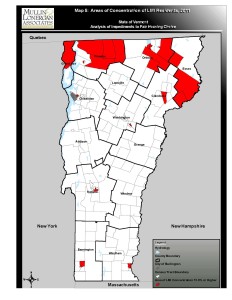Burlington’s chronic housing-affordability problem is bad enough — more than a third of the city’s 9,500 renting households are paying more than half their income for rent and utilities, which puts them in the “severely burdened” category — but guess what? It’s getting arguably worse. 
HUD just came out with its 2016 fair market rents for the Burlington/South Burlington metro area, and they’re lower than they were for 2015. This despite the fact that actual rents in this area have been going up every year. (The 2016 numbers are up and down across the state, as Vermont Housing Finance Agency’s news blog helpfully details.)
If you really want to know why Burlington’s numbers went down, you can go to the HUD page to see the methodology. The unfortunate upshot, though, is that anyone with a Section 8 housing voucher is going to have less to choose from in 2016 than they do this year. That’s because apartments that cost more than the “fair market rent” are off-limits for subsidy. (If it makes you feel any better, remember that majority of Burlington’s “burdened” households don’t have vouchers anyway. Nationally HUD rental assistance extends to only about one-fourth of the people who are income-eligible.)
OK, let’s consider a two-bedroom apartment. The 2016 “fair market rent” is $1,172 (as compared to 2015’s $1,302). What are the offerings on Craigslist?
Here are the first 10 listed rents for two-bedroom apartments in Burlington and environs (South Burlington, Colchester) that we found at noon Monday. (Craigslist is constantly updated, so if you do the search the results will vary):
$2,500, $1,600, $2,500, $2,100, $1,425, $2,400, $2,025, $2,000, $2,000, $1,650.
How “fair” is that market? Now, perhaps Craiglist rents tend to be above average (are there studies that document this?), but there’s not much consolation in that, especially if you have a housing-choice voucher.


